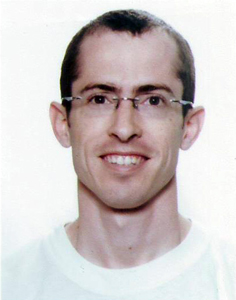
I am currently in the final stages of my PhD at the Technion, under supervision of Prof. Alon Gany. I will be conducting my postdoc at the Reaction Gas Dynamics Lab at the MIT Mechanical Engineering Department under the guidance of Prof. Ahmed F. Ghoniem.
I received my BSc in Aerospace engineering at the Technion in 2006 with distinction (summa cum laude). During my BSc I won the Uzi and Eliana Rubin prize for excellence for my research project under the supervision of Prof. Alon Gany. I also received acknowledgement in the Technion Technological Innovation Competition for BSc students (with partners). I continued to graduate studies at the Faculty of Aerospace Engineering at the Technion, and received a MA as part of a direct PhD course in 2009. During my graduate studies I wrote three journal papers and two patents. I received twice the Arie Hillel Prize for excellence, both for my Masters and PhD studies, the Best Paper Award at the 10th International Symposium on Special Topics in Chemical Propulsion (in Poitiers, France), as well as the Neevya Durban Prize and the Yaakov Timnat Prize for excellence in my research.
PhD dissertation summary
My Ph.D. dissertation explores a new concept for a rocket-like thruster invented jointly by my Ph.D. supervisor Prof. Alon Gany and me. This novel propulsion system comprises of a combustion chamber, which discharges a weight through an ejection tube. This thruster may be beneficial for missile and satellite trajectory corrections, separation of bodies in space, orbital maneuvers and station keeping. This concept can be seen as an investigation of the gun interior ballistics problem from the opposite direction of maximizing the recoil, which in our case is the impulse on the combustion chamber. Multiple pulses of thrust can be achieved by re-loading the chamber and tube with new propellant and weight. The concept was patented both in the USA and Israel.
My research includes the development of theoretical models for studying the two-phase flow (chemically reacting gas with solid propellant particles), combustion and heat transfer occurring in the combustion chamber and exhaust tube. The theoretical results reveal that the system can provide more impulse than a standard rocket motor with the same amount of propellant, even with a very small ejected weight relatively to the propellant weight. Furthermore, the implementation of a traveling propellant charge, where the ejected weight is a cylinder propellant pellet, can eliminate the inert ejected weight while increasing the total impulse. For the application of separation of bodies in space a thruster based on this concept can produce more than 100 times larger impulse than a conventional rocket motor with the same amount of propellant. A new experimental setup was constructed in order to study the concept. The experimental results demonstrate the propulsion concept and validate our interior ballistics models.
